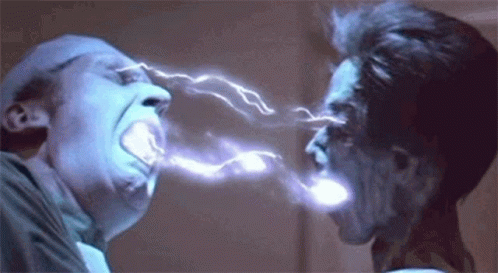
‘There can be no argument as to The Texas Chain Saw Massacre, the 1974 horror film about a group of teenagers who fall into the clutches of a psychopathic family, being one of the most pervasively disquieting films ever made. Its uniquely rotten, insidious flavour is the result of macabre production design, degraded cinematography, clammy lighting and a sophisticated and abrasive use of sound. Like George A Romero’s Night of the Living Dead and Wes Craven’s The Last House on the Left, the film used horror to express the discontentment of a country reeling from Vietnam and widespread social unrest. Fans included Ridley Scott (“It shocked the hell out of me”), Stanley Kubrick, who bought his own print, and William Friedkin, director of The Exorcist, who said it “transcended the [horror] genre”.
‘Its writer-director, Tobe Hooper was already working on a story about young people in peril when he found himself one weekend in the hardware department of a busy store while trying to locate the exit. “I looked down and there was a rack of chain saws in front of me for sale. I said, ‘if I start the saw, those people would just part. They would get out of my way.’” So was born a movie – and a character, Leatherface, the chain saw-wielding brute wearing a mask of human skin – that would become a benchmark in horror and a thorn in the side of film censors everywhere.
‘Ten local authorities in Britain showed the film with an X rating after the BBFC (British Board of Film Censors, as it was known until 1984) refused to issue a certificate in 1975 on the grounds that the picture exemplified “the pornography of terror”, though when that body finally relented in 1999, it noted that “there is no explicit sexual element in the film, and relatively little visible violence”. Indeed, Hooper’s greatest achievement is to have created an atmosphere of extreme dread and distress chiefly through insinuation.
‘It will be some small compensation for audiences terrified by the film that it was even more hellish to work on than it was to watch. The stench of animal bones and carcasses in the stifling heat caused cast and crew members to throw up. There were accidents and injuries (“Everyone had got a ding on the head or a cut to this or that,” noted Hooper) while the clutch had to be removed from the chain saw itself after an actor fell while operating it. Hooper engineered divisions among his cast to create tension and refused to let them see Leatherface until their first encounter with him on camera. “That was the heaviest set I’ve ever been on,” the director said. “It was miserable really.”
‘Tobe was born in Austin, Texas, the son of Lois (nee Crosby) and Norman Hooper: he claimed his mother went into labour in the cinema. His parents were hotel managers who owned a movie theatre in San Angelo. After studying film at the University of Texas he worked as a documentary cameraman and a college professor.
‘He made his feature debut with Eggshells (1969), a partly improvised psychedelic drama described by Hooper as “a mixture of Andy Warhol’s Trash and Walt Disney’s Fantasia”, and directed The Song Is Love (1970), a documentary about the folk trio Peter, Paul & Mary. Hooper then co-wrote The Texas Chain Saw Massacre with Kim Henkel, who had starred in Eggshells.
‘He remained in the horror genre for Eaten Alive (1976), about a killer who feeds his victims to his pet alligator; a well-regarded TV adaptation of Stephen King’s vampire novel Salem’s Lot (1979), starring James Mason and David Soul; and The Funhouse (1981), in which teenagers hiding out at a carnival overnight are preyed on by a killer. He directed Poltergeist (1982), written by Steven Spielberg, but spent many years defending the work as his own following an LA Times article headlined ‘Poltergeist: Whose Film Is It?’ in which Spielberg was quoted as saying: “Tobe isn’t what you’d call a take-charge sort of guy. He’s just not a strong presence on a movie set.” Spielberg published an open letter of apology, though this did not lay the matter to rest.
‘Hooper said that Hollywood stopped calling in the wake of the Poltergeist rumours. He turned to the producers Cannon Films to make Lifeforce (1985) and Invaders from Mars (1986), camp science-fiction horror movies from which no one emerged with distinction, as well as The Texas Chainsaw Massacre 2 (also 1986). For this attempt to continue the story with a rowdier and more satirical tone, Hooper hired LM Kit Carson, co-writer of Paris, Texas, who advised him that they would need to find the right sort of victims. Once again, it was a shopping trip that provided inspiration. “I saw all these yuppies buying piles of things, seven sweaters at a time,” said Carson. “I called Tobe up and said, ‘I’ve found the victims.’” The picture was no match for Cannon Films, which was reportedly more brutal in its cutting even than Leatherface himself.
‘From then on he worked mainly in television directing episodes of Tales from the Crypt and The Equaliser, and a segment of the 1993 portmanteau TV film Body Bags. His final film, Djinn (2013), a horror story set in the United Arab Emirates, attracted scathing reviews.’ — Ryan Gilbey
___
Stills
____
Further
Tobe Hooper Appreciation Society
Where to begin with Tobe Hooper
6 Filmmaking Tips from Tobe Hooper
Tobe Hooper interviewedby Kate and Laura Mulleavy
Tobe Hooper’s Box-Office Struggles: How Shaky Returns Undercut A Visionary Director
Tobe Hooper @ MUBI
ToBe HooPeR ….. oR NoT ToBe
REMEMBERING TOBE HOOPER: LOOKING BACK AT HIS 10 GREATEST FILMS
TOBE TEN
Book: ‘American Twilight: The Cinema of Tobe Hooper’
R.I.P. Tobe Hooper
What It Was Really Like Working With Tobe Hooper On Texas Chainsaw Massacre 2
THE OCCULT TORTURE PORN OF TOBE HOOPER’S TOOLBOX MURDERS
THINGS THAT COULD HAVE BEEN
The Houses That Hooper Built
Tobe Hooper @ Letterboxd
Horror Icons, Celebrities, Friends Remember Tobe Hooper
Remembering Tobe Hooper, Architect of Modern Horror
Tobe Hooper Taught Us All The Saw Was Family
They Came. They Sawed.
Tobe Hooper, 1943–2017
How Tobe Hooper Dissolved the Limits of Genre
THE QUICK RISE AND SPECTACULAR FALL OF TOBE HOOPER
Podcast: ‘Episode 29: “Hanging with Mr. Hooper: A Tobe Hooper Revisit”‘
_____
Extras
Tobe Hooper 1986 Interview
Tobe Hooper “Masters of Horror” part 1
Tobe Hooper on his films & career (2006)
Director Tobe Hooper talks about his real life poltergeist experience, 1984
_____
Interview

LAURA MULLEAVY: We’re so excited to talk to you today because we’re such fans of Texas Chain Saw Massacre. Strangely enough, even before we knew we’d be interviewing you, I rewatched the behind-the-scenes documentaries about the making of the film. I have always looked at it as an art film. It’s one of the most beautiful films ever made. There are so many nuances and layers to the storytelling. But the real way we want to start this interview is to ask if the chain saw was real?
TOBE HOOPER: Oh, yes.
LAURA: So it was a fully operational chain saw?
HOOPER: It was for a while. Halfway through, I said, “Excuse me, someone may get hurt.” After Gunnar fell and had the presence of mind to throw the saw away from him, we decided we had to do something. We only had one saw. So we took the clutch part out of it. That way the chain would still vibrate around. And when we needed to cut into something, we’d put the clutch back in. We really did only have one saw, so it would take hours to pull the clutch out and put it back.
KATE Mulleavy: One chain saw for the making of Texas Chain Saw Massacre! What about costumes? How many sets of those did you have?
HOOPER: Probably two or three sets of costumes. There was a time we lost Sally’s top in the laundry or something. But we were able to find it—or replace it.
KATE: How did you think of the idea of using a chain saw in the first place?
HOOPER: I was in a department store around the holidays, thinking, “I just can’t wait to get out of this department store.” This must have been in 1972 or 1973. There were thousands of people in there, and I was weaving through them to get out, and I found myself in the hardware department. I looked down and there was a rack of chain saws in front of me for sale. I said, “If I start the saw, those people would just part. They would get out of my way.” That birthed the idea of the chain saw. Obviously I didn’t do that at the time. [Kate and Laura laugh] But driving home I was thinking about it. I’d been working on this idea of young people, college students, in isolation. We were going through a gasoline shortage in the country at the time. People had to queue up in their automobiles at gas stations, sometimes for miles. There was gas rationing. And I was hearing a lot of lies on television. Politically, the times were interesting; they were kind of amplified. So the idea came to me in the car of how to pull all of these elements together. It came really quickly—the whole configuration of the characters—and the loop, the way the story loops inside itself.
KATE: Yeah.
HOOPER: You can’t get away, you can’t escape. You’ll jump through a plate-glass window several times and end up being right back in the spider’s web.
LAURA: Some of our favorite horror films have political undertones, like Night of the Living Dead [1968]. And Texas Chain Saw Massacre certainly has those tones to it in regard to American culture—with the idea of family in particular.
KATE: Laura and I both went to Berkeley. I was studying art and took a few film classes. But I actually don’t think I saw Texas Chain Saw Massacre until later in life.
LAURA: We were too scared to watch it.
KATE: Yeah, I think I was too scared to see it. But what makes Texas Chain Saw Massacre a great work of art is that it operates on so many different levels. The first time you see it, you experience it on a purely sensory level. But you can go back and find so much more with each viewing.
HOOPER: Yes, there will be a new print for the collection at the Museum of Modern Art. The old one is turning magenta. Now that the restoration is complete, it can be seen on the big screen again.
LAURA: Which is exciting for us, because we’ve never seen it that way.
HOOPER: It totally amplifies the characters.
KATE: I read that when you were doing the restoration, you heard sounds you didn’t even know existed.
HOOPER: Yeah, it’s in 7.1 sound. It cuts through your head. I hadn’t seen it on the big screen in a long time. I’m going to Cannes in a few weeks because it’s going to be screened in the Directors’ Fortnight there this year. But the restoration process really blew me away, just seeing it side by side with the way it’s usually being viewed on video or laser disc. The new restoration is actually a little bit wider. We were losing information on the side. The colors are incredible.
LAURA: I’m excited to see the color because the palette of the film is breathtaking. Kate and I always laugh because sometimes when we use red in our work, we’ll say, “Is this Texas Chain Saw Massacre red?” because there’s such a unique shade of red that’s specific to the film. I was reading about your use of blood, how sometimes it’s real and sometimes it’s fake. You blend reality and fiction in the film. And I think you can really see in the actors from time to time a genuine horror in their faces for what they’re going through. Like the actors didn’t even get to see Leatherface until their first scene with him, right?
HOOPER: That’s correct.
LAURA: I couldn’t imagine what I would feel like if I actually saw him in real life. And in one of those spaces, which is obviously not a standard movie set. They probably felt like they were really experiencing that kind of terror. And the first audiences, too, must have felt that.
KATE: Did it play in drive-in theaters?
HOOPER: It played everywhere. It played in every theater on Hollywood Boulevard. And it played in drive-in theaters, too. I went to a drive-in to see it and I would notice at points people’s taillights would come on. And I thought, “Oh, God, they’re leaving.” But then the taillights would go off. And then come on again. I realized it was an involuntary reaction. They’d have their foot on the brake, their muscles would tighten and push the break and the light would go on. That was a kind of cool pre-focus group. [laughs]
LAURA: Why do you think people responded to it the way they did in 1974?
HOOPER: Oh, there was nothing like it …
LAURA: Even to this day there is nothing like it. I’m sure it’s influenced hundreds of films in the past 40 years, but to this day there really isn’t anything comparable to it. A lot of what happens in particular to Sally is so immersive that it’s hard not to feel that she’s really screaming and running away. It’s like I can feel the branches snapping as she’s being chased. I don’t find that in other films. The terror is real.
HOOPER: Well, it’s the truth that you’re sensing. It’s from the working conditions I established—like separating the actors. We wouldn’t let Franklin [Sally’s brother, played by Paul Partain] have lunch with the other actors, and we wouldn’t let him bathe. There were all these little techniques and devices that I found to create some kind of sensory impulse to help get the truth. It was also the repetition of scenes. For instance, when Sally breaks through the door of the service station. She had to do that 17 times. And I’m not sure that we had kneepads or could afford them. But Marilyn was totally into it. She gave it everything. So did everyone.
LAURA: There are three scenes in that movie that I can barely watch. The scene where Pam [played by Terri McMinn] dies on the hook; the family-dinner scene, especially when they are holding Sally; and then there is the scene where Sally is running through the brambles. That’s the best running scene in film. You feel as if she’s really being torn to shreds. But overall, my favorite scene in the film is the ending, with Leatherface in the black suit in the sun with the chain saw and Sally drenched in blood. These moments are overwhelming.
KATE: To create these moments, you had incredible art direction. Your art director, Robert Burns, was pretty industrious. I read that you ended up using real bones and animal cadavers that would actually start to rot during filming.
HOOPER: Yes, some of the skeletons were real. When he’s impaled on the tombstone in the beginning. It’s a real human skeleton underneath it. That was a practical, budgetary thing. It was less expensive to get real human skeletons from India than to buy plastic reproductions.
KATE: That’s crazy.
HOOPER: And you needed a lot more light back then to shoot a film. So the lights would cook the stuff.
KATE: It must have been pretty smelly.
HOOPER: Oh, it was.
LAURA: You mentioned the looping in the film, the fact that none of the characters can escape. That must have had a strong psychological effect on the actors. Like that scene where Pam lands in a room of bones and chicken feathers. She starts freaking out, basically.
HOOPER: There were ways of creating tension. Everyone in the cast and crew was synchronized, but the work was very demanding. At the end of filming, everyone hated me. It took years to reestablish those friendships but I knew what I needed to get. So all of the actors became part of this circling energy that had a lot of tension in it. And we were so isolated working on that set in Round Rock. So if this energy starts to spin fast enough, it will start to grow in the atmosphere from sky to ground. And that’s what I was trying to achieve.
LAURA: Did the locals interact with the filming? Did they stop by to see what was going on?
HOOPER: Very few times. The guy who owned the house was living in a room in the back for the entire time we filmed. But he was quiet. We only saw him once or twice.
KATE: I bet he has good stories. I read that the house is now a restaurant somewhere.
HOOPER: Yeah, it is. But it’s in another town. They moved it to Kingsland, Texas.
LAURA: I have a question about the van scene at the beginning of the film. Was that shot early on or later? I’ve always felt like you jump right in on the tension because the characters aren’t really talking to each other. The mood is really strange, internally and externally, even before the hitchhiker gets in.
HOOPER: It was shot somewhere in the first third of shooting. I think the very first shot we did was their arrival at Sally’s grandfather’s house. They walk up to the house. I think Pam’s meat-hook scene was shot shortly after. Pam’s costume was designed with no back to make her look even more vulnerable.
KATE: I was thinking about that because you are always acutely aware of how little she has on—the vulnerability of her back is eerie.
LAURA: The scene with the meat hook connects back to an early shot of the cattle. There’s this disturbing scene of violence about what’s going to happen to these animals—and by inference, to these young people. The cattle have a sense of imminent doom.
HOOPER: I had an experience in a restaurant one time where there was a large trolley with beef being carved up, and I just transposed different images onto it. Like, what if there was a nice little cow there with a bowtie and a knife carving up humans. I was a vegetarian for a couple of years after that. And I guess on the drive from Austin to Dallas on the weekends, I’d pass this slaughterhouse. It’s the same slaughterhouse that’s in the movie, actually. It always disturbed me. It became a part of the psychology of the film. Like Pam’s costume with no back or the constant escaping. I mean, in a traditional film, no one would jump through a glass window twice in the same movie. It just wasn’t done because of some convention. I wanted to be outrageous and break the rules and also involve you and make those characters real for you.
LAURA: It’s so textural. You really feel the heat in the air and it’s … so oppressive. You make a lot of use of the sound design, too. There’s a sound, a weird metallic noise, that is so scary—it might be the scariest sound aside from the chain saw. Where did that sound come from?
HOOPER: It’s quite a few things. I had two Sony quarter-inch stereo recorders in this little music room that had tuning forks and broken instruments. You could put contact mics against an instrument and run it through tape recorders, creating this strange kind of feedback. I liked it a lot. I liked broken instruments, like bass fiddles with tin cans hanging off of them. Or drawing a bow without rosin, grating it across the strings … These sounds can’t really be re-created digitally. You would have to go back to analog to create some of these effects.
KATE: How did the famous family-dinner scene come together?
HOOPER: That scene is funny, but it’s ironic that it’s funny-because to that family, it’s the truth. That’s what their family values are, dating back probably a hundred years or so. Like the line Jim Siedow says, “Look what your brother did to the door.” I think you get a sense of how real that family is in that scene. It’s about an involvement with the audience. For instance, no one in the film tells you it has anything to do with cannibalism. You just assume that. You’re reading into the images and the music and the action and coming up with the narrative, putting the story together. There is very little exposition. So many films now are an overdose of exposition.
LAURA: They want to tell you everything. In Texas Chain Saw Massacre, the slaughterhouse is just there for a split second, and yet it sets up the feeling of the film. You know something is going to happen, and that dread never goes away. Here’s a question: Where did the idea of Leatherface’s face come from?
HOOPER: It really came from Greek tragedy as a foundation. But it was just something I felt the character would do. It isn’t that he’s hiding anything. He definitely isn’t the sharpest tool in the garage. His brother is kind of the artistic type in his way. I think it’s just natural for him. I suspect it might have come as a way of cooling himself off—maybe it could have originally been cow’s skin, and over time it became clothing. [laughs] I hope I answered that. Also, when you can’t see his face, your imagination goes wild. When you can’t see, you fill in the blanks with something that’s far more interesting than what can actually be shown.
_____________
19 of Tobe Hooper’s 43 films
_____________
The Heisters (1964)
‘THE HEISTERS (1965) is Tobe Hooper’s first narrative short film. He had been making documentaries in Austin. THE HEISTERS is, we have to say it – zany. It was made long before THE TEXAS CHAINSAW MASSACRE but it shows his command of many horror tricks and tools, including forbodding insects and sword fighting. But it especially shows his love and knowledge of Hammer horror. This would show up in his first feature, EGGSHELLS. And his love of Hammer horror would come with a glorious vengeance in LIFEFORCE.’ — Watchmaker Films
the entirety
______________
Down Friday Street (1966)
‘A sharp dip into an almost-refined antiquity, for a filmmaker who usually concerns himself with ardent, corrupted civilization (not “society,” as Hooper is either concerned with individuals or the structure at large, on a nominal scale rather than a precise one; his observations on specific social groups are often weaker than when the subcultures merely represent larger issues). This is Hooper’s most withdrawn, well-bred film, into an interior world of objects, his truest occult film (a subject he would subsequently show interest in), for the objects are left to exist throughout divorced from human hands and presence (which Hooper’s films of object-space idée fixe naturally betray, with characters). This is Tobe Hooper’s The Haunting of Hill House. It’s Hooper’s closest to a structuralist film, and he’s come close due to his miraculous instincts even in his narrative features.’ — Julius Banzon
the entirety
______________
Eggshells (1969)
‘Eggshells (which, at the time of its making, was sub-titled “An American Freak Illumination”) was written by Hooper and Texas screenwriter Kim Henkel (who also co-wrote Chain Saw). In the tradition of many Austin-area debuts by first-time directors Eggshells eschews plot entirely – much like Richard Linklater’s It’s Impossible to Learn How to Plow by Reading Books (1988), or Eagle Pennell’s The Whole Shootin’ Match (1978). However, Eggshells sets itself apart from those films by laying out its rambling vision of hippie life in Austin, Texas in a series of acid-splashed reveries: A man sword-fights himself in a basement filled with smoke. A couple luxuriates in the comfort of a plastic dome. A room paints itself in a frenetic bit of experimental animation. A man drives into a field, lights his car on fire, rips off all his clothes and then frolics away as it explodes. Hooper’s camera runs wild through a psychedelic gauntlet of reality-shredding images, and it’s in those images where it becomes most apparent that Eggshells is actually a really incredible companion film to the director’s best-known horror opus.’ — Zane Gordon-Bouzard
the entirety
________________
The Texas Chain Saw Massacre (1974)
‘Tobe Hooper made The Texas Chain Saw Massacre (1974) with one specific intension in mind – to hate us and ruthlessly attack us, both psychologically and emotionally. The film’s sole intention is to drive us mad with its insane sights of the macabre – a ferocious, gruelling, waking nightmare that authentically captures the syntax of one; Hooper’s superior artistry with pitch-perfect execution pushes our boundaries beyond limits. Everything depicted here causes an impact so deep in our psyches that we will not soon forget what we just experienced – sheer horror, as we suffer from anxiety, despair, and fear from the psychological mindfuck that it relentlessly hits us with, and our emotional response is to squirm with immense discomfort. The Texas Chain Saw Massacre is an uncompromising exercise in cruelty and savagery entailing torture, mutilation, and murders. It features five prolonged sequences of maddening terror, and all its horrid events are encapsulated in a constant thick atmosphere of dread.’ — Dave J. Wilson
Trailer
Excerpt
______________
Eaten Alive (1976)
‘Eaten Alive is a horror/exploitation film about a deranged hotel owner who kills his guests and feeds them to his pet crocodile. It has a solid B-movie cast, including Marilyn Burns, who memorably screamed her head off in Chain Saw, and a heavily made-up Carolyn Jones, who was “Morticia” on the The Addams Family, playing brothel owner Miss Hattie. A young Robert Englund (a/k/a “Freddy Kruger”) is great as the lowlife “Buck.” Englund utters the unforgettable first words in the picture: “Name’s Buck. I’m rarin’ to fuck.’” The dialogue was later adapted by Quentin Tarantino and used in Kill Bill: Volume One.’ — Bart Bealmear
Trailer
Excerpt
_______________
w/ John ‘Bud’ Cardos The Dark (1979)
‘Director Tobe Hooper was fired from this 1979 film that was restructured during post-production to take advantage of the buzz surrounding the sci-fi horror juggernaut, Alien. His ousting was probably for the best, as the film was changed drastically during post-production. In an effort to cash in on the pre-release publicity for Ridley Scott’s Alien, producers decided to retrofit the cannibal killer into an alien being. This created a fragmented and often confusing narrative that did not translate into a hit for FVI.’ — Bradley Harding
the entirety re-cut to emphasise Tobe Hooper’s role in it
_______________
The Funhouse (1981)
‘While on the surface this film may appear to be just another run-of-the-mill slasher, beneath the veneer of VHS sleaze, we find a beautiful and poignant commentary on the evolution of the horror movie genre. We are almost overwhelmed with horror references in the opening scene of the film, which depicts Amy’s younger brother wandering through his Universal Monster poster covered room, peering through the eye holes of a mask (à la Halloween) as he slowly creeps with a fake knife into the bathroom where his sister is showering (hey-o Psycho). The Funhouse is lovably cognizant of what it is, and in many ways, it acts as a forefather of sorts to fourth wall-breaking horror films, like Scream and Cabin in the Woods, that would eventually be applauded for their tongue-in-cheek commentary on the genre.’ — Travis Singley
Trailer
Tobe Hooper on “The Funhouse”
_________
w/ Piers Haggard Venom (1981)
‘Director Piers Haggard said in a 2003 interview for ‘Fangoria’ magazine, “I took over that at very short notice. Tobe Hooper had been directing it and they had stopped for whatever reason. It hadn’t been working. I did see some of his stuff and it didn’t look particularly good plus he also had some sort of nervous breakdown or something. So anyway they stopped shooting and offered it to me.” At a party at Elaine’s Restaurant in Manhattan celebrating the film’s release, Klaus Kinski boasted how he and other members of the cast and crew had ganged up on Hooper a couple of weeks into the shoot to get him replaced.’ — IMDb
Trailer
_______________
Poltergeist (1982)
‘Did the late filmmaker Tobe Hooper deserve his position as the credited director of the classic horror film Poltergeist? Or was the film’s co-writer and, by all accounts, very hands-on producer Steven Spielberg the project’s real auteur? It is a controversy that has been debated since the film’s release back in 1982. This week, Hooper’s friend and collaborator, the filmmaker Mick Garris (Sleepwalkers) offered his expert opinion in the course of a new episode of Garris’ Post Mortem podcast which found the host paying tribute to Hooper, who died last month.
‘“I was doing publicity on Poltergeist and a lot of people were talking about the Spielberg and Tobe Hooper situation,” said Garris, who later worked with Hooper on Showtime’s Masters of Horror series. “From my perspective, it was Tobe’s first studio movie. Here he is, on a studio lot, on a big soundstage. Steven Spielberg had written the shooting script, was on the set, and was producing, and Spielberg is a consummate filmmaker and he lives and breathers movies. He probably has sprockets up and down his spine. Very passionate, very intelligent, very articulate. And, yes, I would see him climb on the camera and say, ‘Maybe we should push in on a two-shot here,’ or ‘do-this-or-that,’ there. And Tobe would be watching. Tobe was always calling action and cut. Tobe had been deeply involved in all of the preproduction and everything. But Steven is a guy who will come in and call the shots. And so, you’re on your first studio film, hired by by Steven. I mean, Tobe directed that movie, Steven Spielberg had a lot to do with directing that movie, too.’ — Clark Collis
French trailer
Poltergeist 1982 (FILMING LOCATION)
______________
Lifeforce (1985)
‘A hugely budgeted cult oddity that concerns a European spaceship that encounters a terrifying alien craft in the tail of Halley’s Comet, it has everything a growing horror freak needs: extreme violence, tons of nudity, vampires, mummies, and apocalyptic bedlam. The movie is slyer and smarter than people give it credit for, and absolutely gorgeous-looking (it was shot by a longtime Bond veteran). It was Hooper, who is best known for his immortal classic “The Texas Chainsaw Massacre” and the Steven Spielberg-assisted haunted house modernization “Poltergeist,” at his grandest and most playful. Had “Lifeforce” been a hit, Hooper would have probably been canonized as one of the horror greats, a household name that doesn’t even need introduction. But thanks to its failure (every bit as spectacular as the movie itself), Hooper began a slow crawl into obscurity.’ — Drew Taylor
Trailer
the entirety
______________
Invaders From Mars (1986)
‘Tobe Hooper’s Invaders From Mars is an anomaly among the 1980’s remakes of 1950’s B-Movie Horrors because it doesn’t attempt to make its source material frightening for a later era so much as it is interested in recreating the feeling of watching those films in the 50’s, with all the attendant creepiness and paranoia. Invaders From Mars uses the best available talent (Dan O’Bannon, John Dykstra and Stan Winston among them) to make an intentionally artificial out-of-time world, where everything seems not so much fake as it does made. This is a world not of our own, but made from and out of Sci-Fi Schlock of old. That Hooper turns around and makes the subtexural threat not communism but the return of 1950’s America, a return to rigid, bland conformity, a counter-revolution against the liberation movements of the 1960’s, the promised land of the Reagan Revolution. This was the creepiest, most unheimlich aspect of living in and through the 1980’s itself, the desire to reverse history, to engineer a reactionary paradise out of popular culture, to turn back time to a point which never actually existed in the first place. Invaders From Mars, far more than any other film I have seen, truly gets that and makes that very weirdness into an invasion from without, externalizing the threat to draw attention to it, which is the most Fifties thing you could do with something amorphously terrifying at work in the culture.’ — nathaxnne
Trailer
Excerpt
______________
The Texas Chainsaw Massacre 2 (1986)
‘Starring Dennis Hopper, Caroline Williams and Jim Siedow, not to mention a star making turn by future horror icon Bill Moseley, The Texas Chainsaw Massacre 2 is one hell of a ride. Trading its dark tone for bloody irreverence, the film finds horror less concerning than laughs — and more brilliant for it. Sure, the first one’s scary. But the sequel? It’s bloody hilarious. Throw that hilarity on an old Texas grill with a dash of bizarre, and you’re chewing on TCM 2. Featuring Hopper eating scenery as “Lefty” Enright, TCM 2 is so over-the-top and cheesy. But that cheese tastes great melting atop that good ‘ole Texas meat.
‘Moreover, the film’s intrinsically thematic, something the original isn’t. Hooper’s ’74 masterpiece is a straight forward horror film. It’s scary as hell, but there aren’t messages bleeding through the celluloid there. People are crazy and may eat you. Watch your back. Got it. However, the sequel is a response to ’80s consumerism and the rise of yuppie culture. A perfect companion to John Carpenter’s They Live, The Texas Chainsaw Massacre 2 is a film steep in ideas of the almighty dollar becoming king — proving Hooper is one of the best filmmakers in the genre.’ — Joey Click
Trailer
Excerpt
______________
Spontaneous Combustion (1990)
‘A lot of Hooper’s movies are about families, social niceties, and perverted upbringings, with the extremes and excesses of the genre—be it gruesome violence, shameless symbolism, or gratuitous nudity—as disruptive, destructive forces. And for all of its dysfunctions, Spontaneous Combustion might be one of his most clearly realized films from a concept-design standpoint, reflected in recurring color motifs, eccentric and artificial sets (the Bain character’s neon-lit apartment wouldn’t pass as believable in a latter-day Nicolas Winding Refn movie), and ironically quoted pop iconography. Which is to say that its messiness as a genre piece exists in some strange, tense relationship with its more coherent dramatic through-lines. But then again, it’s a movie about anger, and anger is supposed to be irrational.’ — Ignatiy Vishnevetsky
the entirety
______________
I’m Dangerous Tonight (1990)
‘Tobe Hooper directs this wack Fear Street knockoff where Shelly from Twin Peaks finds a haunted mummy dress that makes her. . . dangerous. After slipping on the evil gown, she becomes a wild delinquent who ditches her bedridden grandma to dance seductively at a college formal. Lots of amazing early ’90s baggy fall fashions and a supporting turn from Anthony Perkins as a cursed object occult expert push the movie over the top. The plot gets kinda muddled halfway through, the pacing feels slack, and Hooper doesn’t go ape enough with the premise. But if you can find the tape, I’m Dangerous Tonight is a fun enough way to kill 90 minutes and fill in more esoteric patches of the Texan horror maestro’s filmography.’ — Patrick Pryor
Trailer
_____________
Night Terrors (1993)
‘Night Terrors may offer nothing more than scattered and half-witted commentary on themes of cruelty and religion, sex and sadism, Gnostic moral code and aristocratic abuses, but the motions towards such depth and broad-minded humanist commentary are there, if in its airheaded, barely literate capacity. In being tied up with what is thoroughly bracing, profoundly imbued, uncommonly formalistic cinematic literacy (that “severity and seriousness” of presentation embedded in Hooper’s wish to be aesthetic, poetic, grammatical, ascetic, abstractive, lyrical, divine, enlightening, etc.), it makes even a film filled with as much lows as Night Terrors feel generally something to herald and hold up above the rest of the films where entertainment and the fashionable are most often the main purpose. There are indeed alternative criteria for judging art, and Hooper’s spirit of Art and altruism – his entire artistic self wedded to a Godliness of the seventh art, in its most pure moral and artistic capacities – pretty much curves the grading scale towards him for me.’ — Cranial Blowout
Trailer
Excerpt
_______________
The Mangler (1995)
‘When King and Hooper’s first feature-film collaboration, The Mangler, was announced in the mid-90s, the excitement in horror circles was palpable. The movie was being adapted from a short story featured in one of King’s most critically acclaimed collections, 1978’s Night Shift. The collection already produced a cinematic hit in the form of 1984’s soon-to-be-remade Children of the Corn, but more impressively, Hooper and King’s blockbuster small-screen miniseries Salem’s Lot had been adapted from a novel based on Night Shift’s opening story, ‘Jerusalem’s Lot’. This miniseries was a huge hit with horror fans, and remains a well-loved classic with some truly inspired scares and peerless, atmospheric direction from Hooper. So, given their combined talents and other successful collaborations, why was The Mangler a critical disaster that was laughed out of theatres upon release? The movie had an uphill struggle from the source story onwards, but the title alone gives the first compelling clue to its eventual inevitable failure.’ — Cathal Gunning
Trailer
Excerpt
______________
Toolbox Murders (2004)
‘In 1978 producer Tony DiDio made The Toolbox Murders; the title as well as the fictional “based on a true story” claim are both directly inspired by Hooper’s 1974 film. Then in 2004 DiDio hired Hooper to remake The Toolbox Murders based on the renewed interest in him after the Chainsaw remake. The original film is a nasty little slasher that floats by on its own bad vibes, but outside of a few key elements (namely killing people with tools) it bears little resemblance to the 2004 version. The remake did well enough to earn a sequel, but critics were not impressed with the results, not bothering to view it as a continuation of the themes Hooper had been playing with his whole career. When a filmmaker produces a distinguishable film despite clear restraints like budget, time, or difficult working conditions, it can highlight the distinct style of the director. Like a demo tape, their unique style might emerge in the absence of a lavish production. Toolbox Murders is a brutal, disorienting nightmare that exceeds expectations and delivers on the reputation Hooper earned at the beginning of his career.’ — Klon Waldrip
Trailer
_____________
Mortuary (2005)
‘Mortuary is one of those films where a once great horror director has clearly lost his touch. Tobe Hooper, known for The Texas Chainsaw Massacre, Salem’s Lot, Poltergeist and other horror classics, directs this abomination. A film so awful that it has made me lose total faith in the director. This film had potential in being such a great film. Instead it ends up being an awful train wreck of a film that is one of the worst horror films in the genre. The whole picture looks cheaply made with poor effects. This film had a very good idea, but unfortunately due to a very poor script, it never takes off the ground. This was a painful film to watch. I think the saddest thing about this film is knowing that Tobe Hooper was once great, but like so many other horror talents, he clearly has lost his touch, and now makes unsatisfying horror films that are simply poorly constructed, and end up being unwatchable and not interesting.’ — Alex r
Trailer
_________
Djinn (2013)
‘It’s unclear just how much of the blame for this titanic trainwreck is to be leveled at Hooper’s feet. Accounts of set visits to the filming of “integral” scenes now nowhere to be found in the finished product — coupled with the well-documented difficulties of the journey from set to screen itself — suggest at least some level of interference, but if there’s a single shot in the final film for which Hooper called cut he ought to be ashamed. Tonally as well as technically, this is an atrocious excuse for a movie that would be strikingly bad from a first-timer. Indeed, it’s not so much “Djinn” as it is “The Tobe Hooper Massacre”: a repudiation of reputation that not only fails to remind us of the heights this director once scaled, but actively invites us to wonder if it’s not just our spectacles’ curiously rosy hue misinforming our recollection.’ — Ronan Doyle
Trailer
*
p.s. Hey. ** David, Hi. The sun is bright and cold, no? Well, I guess you were paying for the rarity with KB, no? Seems like that’s the vibe. I’m okay with Grace Jones, but I’ve never understood the reverence. It’s one of those situations where I think maybe I’m not gay enough or something. ** David Ehrenstein, Thanks for the good words -> Mr. Lott. ** Misanthrope, Yep. Happy to hear your body is more than agreeing with you. Well, you can’t really blame Kayla, right? I can totally imagine that your room smell funny, ha ha, but for different reasons. ** Bill, Hi, B! Swamped, urgh, forage. Sara Driver, huh. I haven’t thought about her in yonks. I’ll look for ‘You Are Not I’. I hope your weekend is de-swamped enough that you can splash around. ** Maria, Isabella, Camila, Malaria, Gabriela, Thank you kindly. I don’t seem to have any strange or exciting neighbors. Or at least not when they’re near their windows. It’s kind of sad. ** Shane, Congrats! ** _Black_Acrylic, Oh, excellent! A novella made of your flash fiction is such a great idea. Ooh! Excited for you, and for me (fan) too! ** Dominik, Hi!!! I’m glad you liked Brendan’s things. Well, miracles do happen because I did go to The Real McCoy yesterday with not one but two friends! And it’s a tiny but jam-packed place. And I came away with trashy US booty: many boxes of macaroni & cheese, Jif Smooth Peanut Butter, Matcha Pocky (technically not American), SweeTarts, and more! I could’ve spend a hundred Euros in there very easily. So, whew, mission accomplished! Um, I think the shoes Yury picks would be classified as sporty but with a slight, um, elegance or something? Definitely not elegant with a capital E. Aw, your love is such a tease. In the good, foxy way. Love living his life as though there is a murdering, chainsaw wielding maniac hiding behind every piece of furniture and door, G. ** LC, Hi. Mm, I think I got a couple of low end, shitty merit badges as a Cub Scout, but I crashed and burned out of Boy Scouts pretty early on because I wouldn’t cut my hair, so they kicked me out. All for the best. ‘Boy Scout Ranch’ sounds like the premise of something very x-rated. That project of yours with your poet friend sounds very fun indeed! Is it just to do it and get pleasure thereby, or are you guys going to, like, turn it into art or something? Either way: envy. Have a good weekend! ** T, Hi, T. Just wrote back to you, and hopefully I’ll see tomorrow! Ah, dang, about the useless (but not, i.e. coffee-flavoured religieuse) bus trip. I, of course, will wolf down the weekend you conjured for me. My two favorite Paris pastries are this insane escargot pistache at this great boulangerie in the 10th that is sadly closed on the weekends, and this insane roulaux matcha at the great Japanese-French patisserie Sadahuaru Aoki, but it’s way over in the far end of the 6th, and I don’t think I want to metro that complicatedly and far. Alas. I hope your weekend …well, includes a lovely coffee with moi! xo. ** politekid, Hi, O! Great to see you, pal! Thank you so much about ‘I Wished’. Aw, that’s great, I’m so happy you liked it, reliably discriminating one. I hope you’re busy for superb reasons, and catch me up whenever time spent here seems like the most self-bettering option available to you. ** l@rst, I tried an isolation tank once, and it didn’t do squat. It’s like that stupid Dream Machine. I was, like, trying to stare at this stupid gimmicky desk lamp is supposed to do what exactly? I think I’m too logical. Oh, how nice, about your co-worker. Hug her or something for me. Dude, make sure your weekend gets in some kind of record book. ** Okay. I thought I would give you a fun weekend, and, for whatever reason, a post devoted to the strangely shaped and spotty oeuvre of the very sporadically great horror moviemaker Tobe Hooper seemed fun at the time I built this. Please enjoy, because that’s the whole idea. See you on Monday.
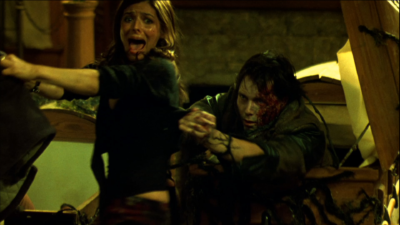
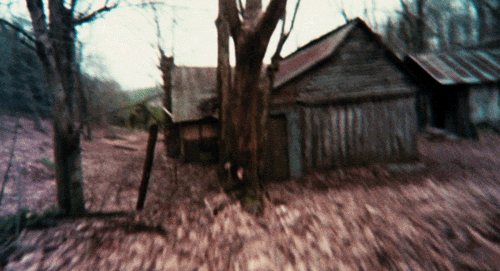
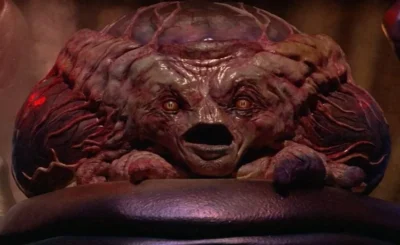
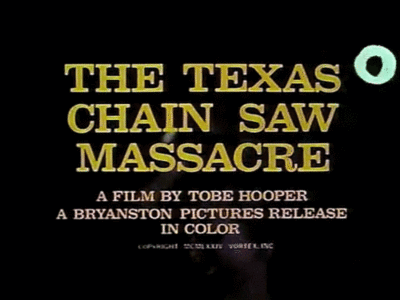
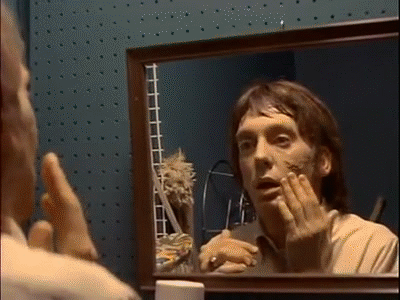
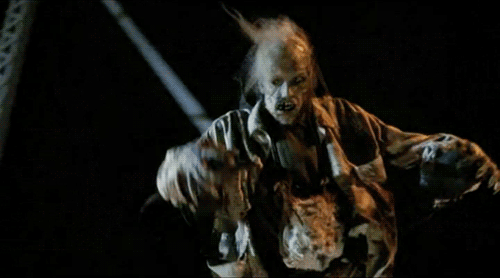
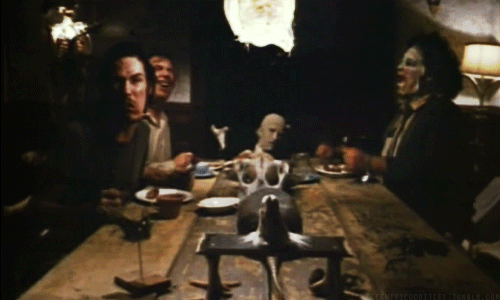
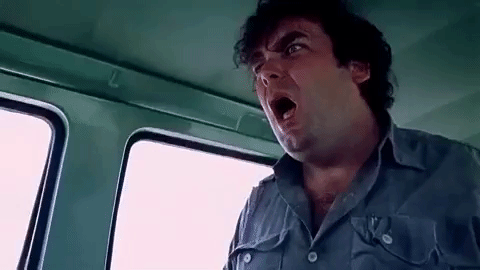
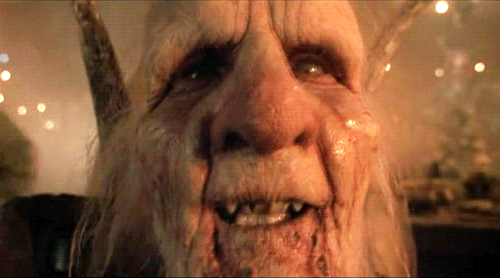
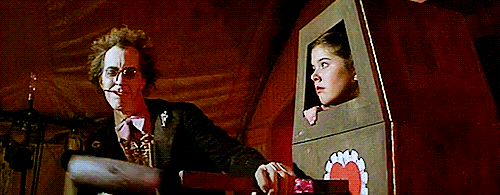
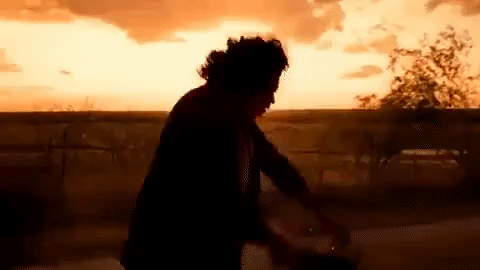

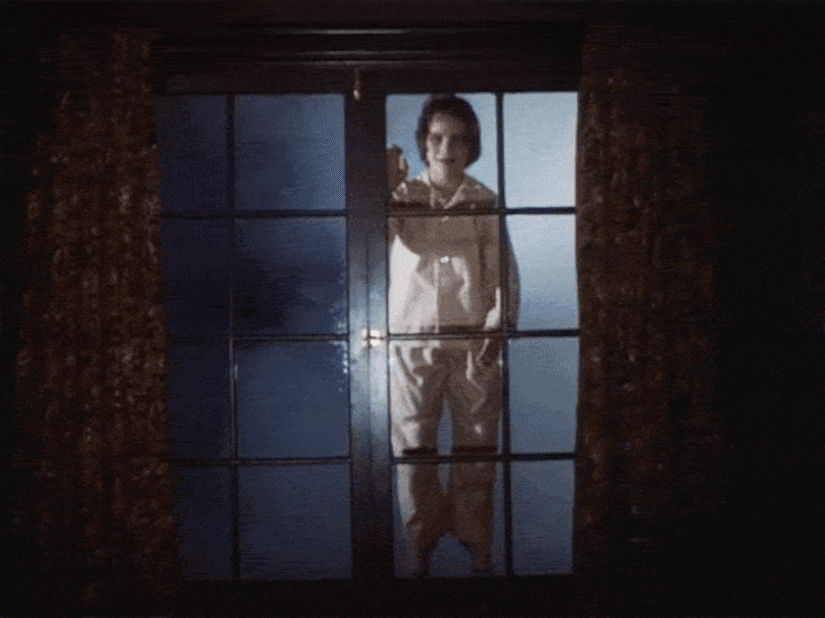
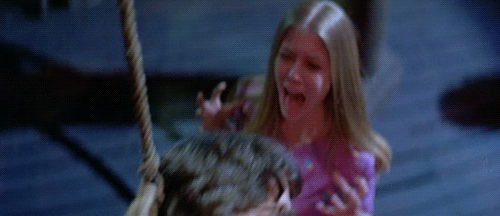


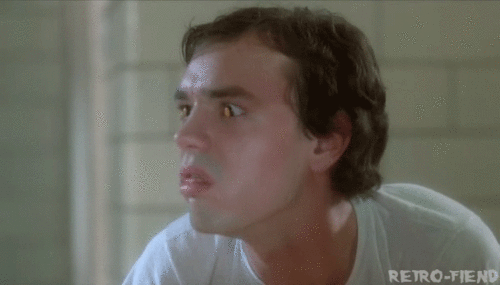
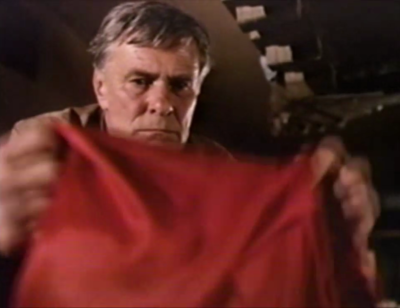
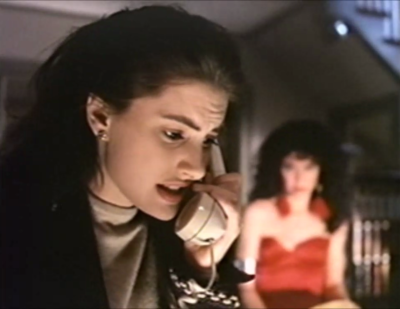
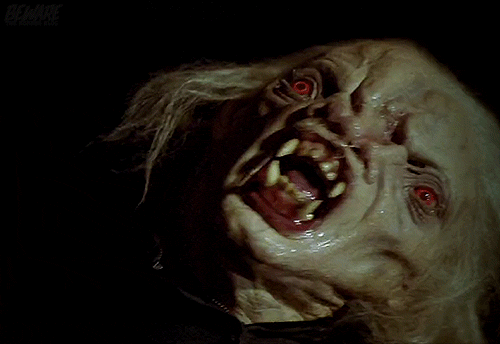
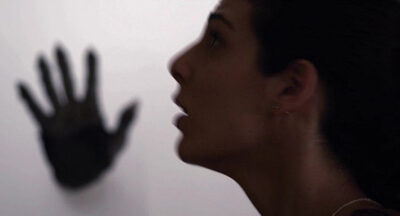
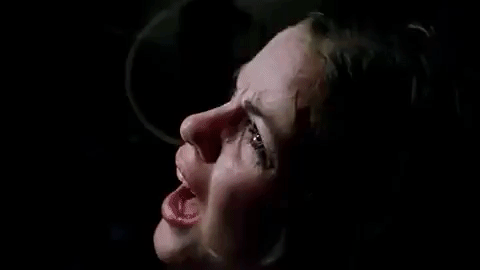
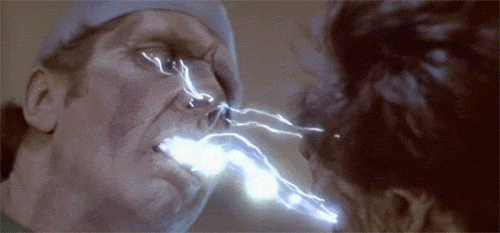
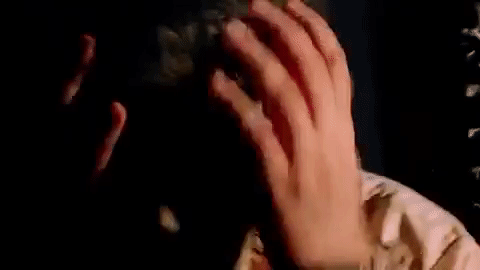







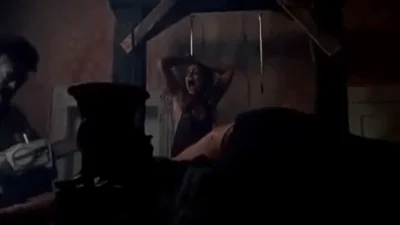
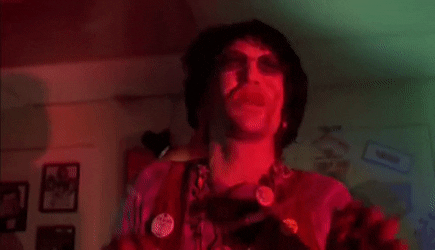
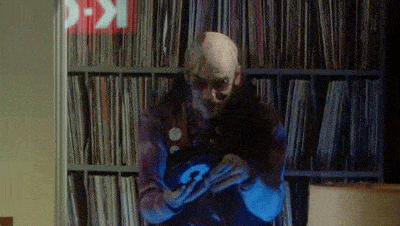

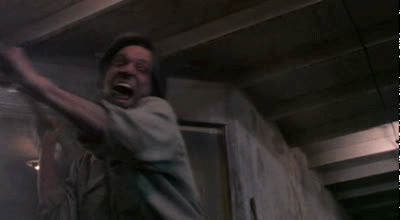

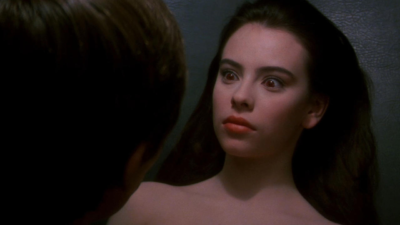
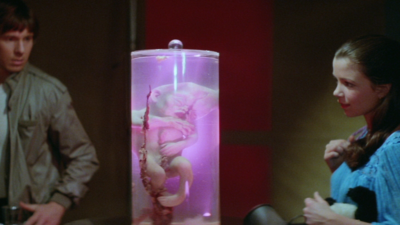

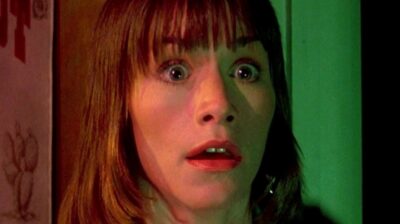
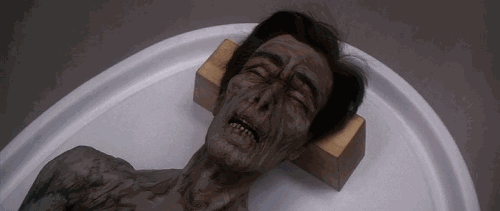
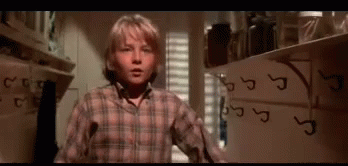
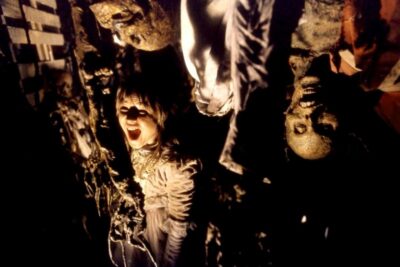
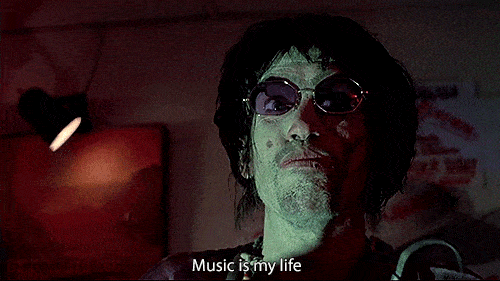
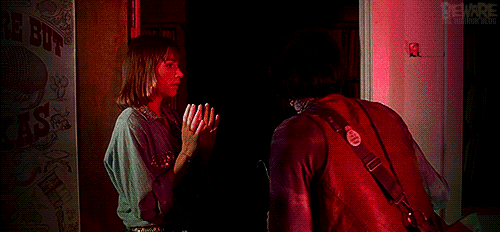
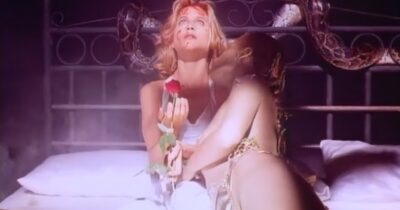
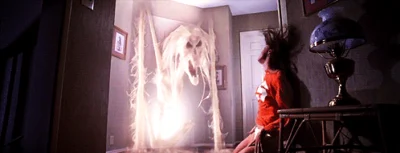
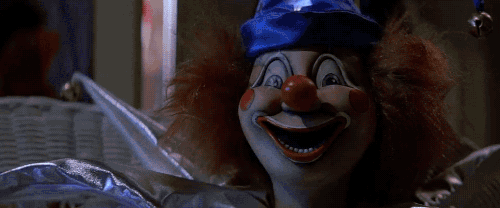
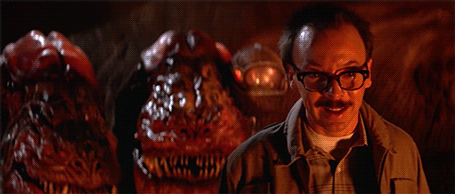
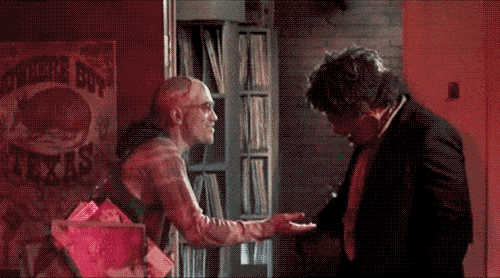
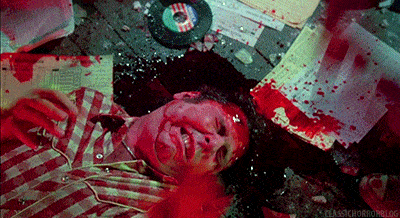
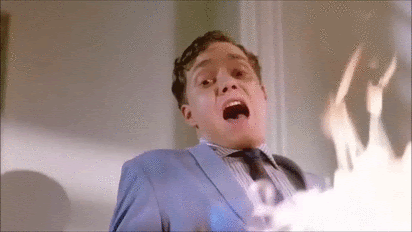
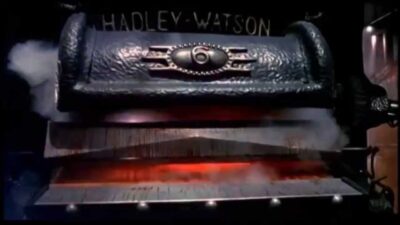
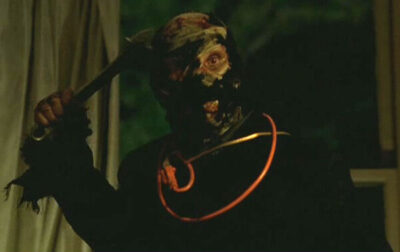
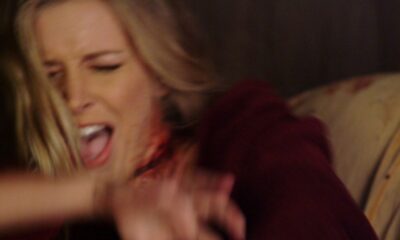
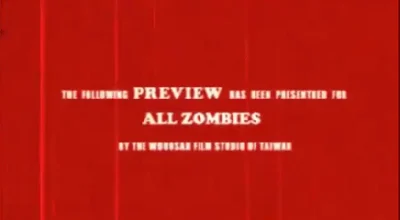


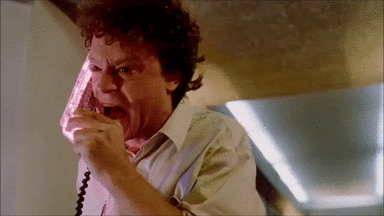
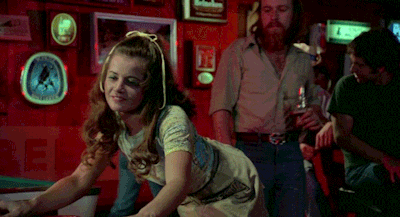






 Now available in North America
Now available in North America 
There’s something very comforting about this post, I am a huge fan of horror… years a go when I went through a time when I could only get to sleep to the sound of screams… it was enormously comforting… I used to play ‘Bereavement’ on a loop and drift to off… do you like that film?
I was just looking up ‘Permanent Green light’ during the early hours… I fully intend to see it soon if possible… I’ll see if it’s on dvd??
Have a brilliant weekend pal x
‘Sat evening’ I’m currently feeling like Brundle Fly/Jeff Goldblum… as another part of my repaired wisdom tooth has broken off and I gone down my throat… no pain….
“I’m transforming!!!”
yep something like that! I’ve been wiggling it, to see if it will just come out…
Hi!!
I almost can’t believe it finally happened! And what a rich trip it turned out to be! You’re probably enjoying a delicious weekend right now. (I don’t know what the Hungarian equivalent of SweeTarts is called, but I can almost feel the taste in my mouth. This is gonna grow into a craving, haha.)
Oh, no, poor love. That must be really exhausting – living with such paranoia. Love buying a chainsaw and starting to follow your love around to protect him, the irony of the situation completely lost on him, Od.
Tobe Hooper’s iswildly uneven but always interesting. It begins with a horror masterpiece that no one — not even Hooper himself — has ever topped.
The new Woody Allen “Rivkin’s Festival” is apparently playing at the Nuart here in L.A. but there have been non reviews and it hasn’t been getting any business. Weird.
D-
What I love most about Toby Hooper is the soundtrack to Texas Chainsaw Massacre. It’s like he’s just playing sheet metal or something. Scary as fuck. That movie still freaks me out. Forever I believed it was a true story well, cuz at the beginning it says it was. Me being the nice guy felt horrible for the families of the victims because surely they’ve seen people walking around with TCM t-shirts etc. I can be pretty silly sometimes.
-L
Dennis to link with this post, my husband, he has a very weak heart and hasn’t been very well at all,
his favourite has always been that Madonna, singer,
so I am surprising him, with a latex hood mask I am buying of her from the internet,
It has the blonde hair, nice face etc.
I am putting on a sexy dress,
and after I climb up at window,
I gently tapped till he came to see,
but he is then screaming and falling back!
Coops, unfortunately I accidently put a the mask on inside out by the mistake,
and now he is in hospital,
I wonder if you could please keep him in your prayers,
I go
Stop already!!!! you crazy piece of… there is no husband right? it’s a cardboard cut out! you took to hospital??? aka the spare bedroom….
You said someone would find money last week, well…. I found a 5 dollar bill, yep I did, on the street, but it wasn’t because of you…
and god give me strength!!!!!!!
Cool post Dennis
My dad Pete is in a bad way at the hospice and they are saying there is not long left. I sort-of talked to him by phone this week and it may be our last conversation. He was never on social media and had no email account but I figure it is ok to discuss here. I know he really enjoyed seeing PGL in Glasgow that time, and it was great for you guys to briefly meet up. Will keep you posted.
I’ve only seen Texas Chainsaw Massacre and Poltergeist. The early shorts look pretty interesting; can’t say I’m too compelled to check out Hooper’s later movies.
I’ve been able to splash around a bit this weekend. Found a copy of Yau Ching’s 2002 “Let’s Love Hong Kong”, pretty interesting with a kind of chaotic early internet energy in sections that reminds me a little of Shu Lea Cheang. The YouTube copy has no subtitles though. We’ll see what the rest of the weekend brings.
Bill
LIFEFORCE is much better than it was given credit for at the time. I think the tide’s slowly turning, but for a long time the common opinion on Hooper was everything else he made paled in comparison to TCM. Have you read Scout Tafoya’s new book on him?
Another snowstorm today, but it’s very light. Yesterday was close to 60 degrees, beautiful out. For the first time since last summer, I went to a restaurant whose indoor tables were all taken.
Really enjoying DFTK, the new album by rapper Yung Kayo, whose beats sound like a particularly hypnotic 90s Nintendo soundtrack put through distortion and phasing.
Hey, Dennis,
I too have only seen “Texas Chain Saw Massacre” from Hooper, but it’s one of my favorite films. I’ve heard really really mixed things about his other work for the most part. I assume some of the ones listed here have your seal of approval? I’m loving “Four Nights of a Dreamer” the more I think about it. I actually dreamt about it over the weekend, funnily enough, so it clearly clicked with something somewhere in my brain. And yes, it’s so funny. Surprisingly funny! People had told me that before I watched it, and I assumed it was going to be a sort of dry or droll humor or whatever, but no, it’s like outright gags and comic sequences, which was wonderful. And yeah, that boat sequence is one of the best he (and hence anyone) ever put together. His work is really starting to get to me after taking some time to fully appreciate. It’s really something. Oh, that four hour class is definitely teaching me many important things, I didn’t mean to undersell it or anything. It’s just mainly technological stuff: how to work with film and cameras. The rest of it, the aesthetic/language of cinema stuff, is just a rote repetition of everything that’s been repeatedly drilled into me since 11th grade. But the technological stuff is important, so I’m focusing on that. I took a break from Bresson this weekend because I want to pace myself a bit. It was a mostly “Jackass”-centered weekend, which, let me tell you, going from Bresson to “Jackass” is like…well, I can’t even think of an analogy. On Saturday me, my brother, and several friends went to see the new one in theaters, prefacing it with a home screening of “Funny Games”, which felt appropriate. It was a wonderful night. Maybe your weekend carried its own delights? I hope so.
I had a fascinating experience exploring the real human and animal skeletons on this site. The collection is well-curated, educational, and presented with great attention to detail. Whether you’re a student, educator, or simply curious, it’s a captivating resource that combines science with respectful presentation. Highly recommended for anyone interested in anatomy or natural history!
https://anciennthunt.com/